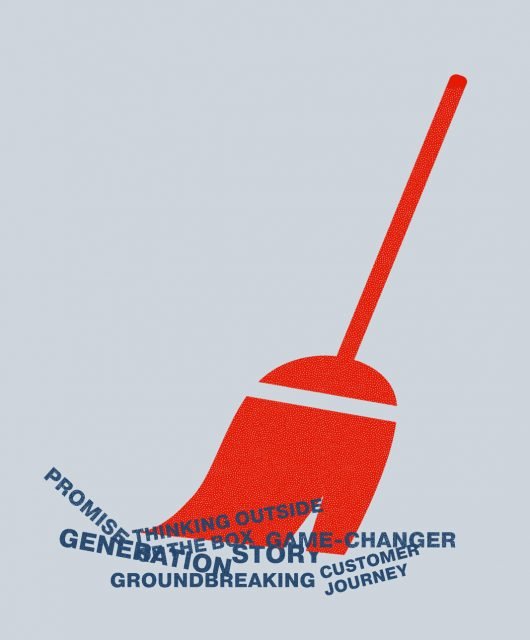The Renaissance of Seduction… Where does Shopping go from Here?, By Sally El Akkad
How many times have you been inside a store with no intention to buy anything, and ended up with a full basket? How about the opposite? you have the power “monies” and the need, but while purchasing you get confused with too many messages, or sometimes no messages, or sometimes absurd usage instructions, or possibly provoked by the sales rep., or have concerns from the after-sale service.

Very frequently, your mind, along with your heart, makes a lot of considerations when buying. And the way they coordinate to reach a decision is what makes, or does not make, the purchase happen.
Think about the last time you had a really great experience as a customer — remember the way that experience left you feeling; GREAT! Now, ask yourself this; why would any other consumer differ from you in his/her purchase journey? And the answer is…Literally Nothing!
Consumers experience feelings and emotions at each touchpoint a brand provides, leading them to form verdicts. Feelings can range from joy to neutrality to disappointment. Judgments can range from positive (such as viewing the company as helpful when consumer is efficiently assisted), to negative, (such as seeing the company incompetent when dealing with frustrating customer service). The emotions and judgments can vary wildly from one touchpoint to another. Thus, they might like the brand and hate the website, they might enjoy the social media but hate the store experience.
86% of those who received a great consumer experience were likely to repurchase from the same company, compared to just 13% of those who received a poor customer experience, according to a study done by Temkin Group, which sparks the thinking of how serious your company is looking into the future of consumer experience approach.
Look at this mind-blowing fact; the Temkin Group study found that companies earning over $1 billion annually can expect to earn, on average, an additional $700 million within three years of investing in customer experience. That is a 70% increase in revenue within 36 months!
Consumer experience, sometimes called CX, is the impression your customers have of your brand throughout all aspects of the consumer’s journey.
Just to make things simple, how can we improve a customer experience in 7 points:
- The two primary touch points that create the customer experience are people – specifically “trained knowledgeable staff” and products “deliver on purpose”
- Other touchpoints are important where they define consumer shopping sentiment- a critical synchronization must exist between departments to deliver it – thus it is not only the direct interaction that matters to a company or brand, but also even the indirect ones whether through TV ads, social media or even word of mouth, however fact remains, not all touchpoints are of same importance weight
- Consequently, being aware of the pre-purchase, purchase and post purchase interactions must be treated in a singular manner- The “customer corridor” map the series of touchpoints that a customer experience
- Defining CX KPIs and make them everyone’s responsibility to achieve and fulfill- it needs to be a common target that complements monthly sales and disclose its results periodically for people to understand where they are standing from achieving its aspiration
- Furthermore, you need to measure those KPIs, be it Net Promoter Score (NPS), Customer SATisfaction Score (CSAT), Customer lifetime value …etc.
- Building a task force is a key for success, with trusted leadership that is willing to listen to both team members and customers. All department must build their operations around consumer experience; how a consumer should interact and feel across touchpoints “physical or digital” – liaising the two worlds is empirical to succeed – never underestimate the importance of omnichannel
- The senior Leaders who genuinely believe in CX are key enablers, they will give their heart, mind, efforts, and budget to drive change
Between 2010-2015, CX leaders grew 6x faster than CX laggards – Forrester
Why is this important? Simply because of business sustainability …
Consumer journey starts with conversion, if he/she didn’t buy into your brand promise and experience, you are simply out of business. Therefore, by sealing the deal and accomplishing the sale, your strategy should be moving the consumer from conversion to loyalty to maintain the conversion related investment effect and what is a better investment more than an advocate who buys more of your products/ service and even talks about his/her positive experience with your brand, helping more consumers to be recruited via referral. 71% of people recommend a product or service because they received a “great experience” – that is every marketer’s dream!
The experience encompasses a long list of touchpoints, packaging artwork, display, store layout, location, smell, lightning, staff hospitality & knowledge, aftersales, maintenance, spares parts availability, website & digital operations integration, partnership ecosystem …etc. Dozens of elements that you need to list with your team so that you tackle it afterward with a growth mindset.
Research by McKinsey & Co. suggests that customer journeys are significantly more strongly correlated with business outcomes than with segregated touchpoints. This means you need a clear understanding of the end-to-end experiences with customers and how interactions at each point are perceived.
The consumer is the arbitrator, you can claim as much as you want that your brand/ service is the best technology, highest convenience, friendly, accessible, sophisticated and if the consumer doesn’t buy into this, then you are just wasting your marketing “monies” in vain. The dots must connect for a holistic experience that sings one consistent song in the consumer eyes, ears, and minds. Let us face it, people are different, thus their perception of the experience can be so different. So, the more you are on top of your touchpoints the more you will be capable of maximizing its output. And with the unstoppable rise in social media, it has become “mission-critical” for brands to invest in new technology and ways of working to control their own narrative.
In fact, according to a global CX study by Oracle – 74% of senior executives believe that customer experience impacts the willingness of a customer to be a loyal advocate. The tricky question is, does their belief translate into budget and enabling organization structure to support the aspired consumer experience?
Just remember; The quality of a customer’s experience can make or break a company. You can have the best products but:
- Your team is not working within synergistic experience,
- You don’t have the technological and technical foundation that enable growth
- The consumer journey pinpoints are not clear
- The selling channels compete and intentionally jeopardize each other
- The team is not well trained, thus they wrongly sell products
- The team is driven by sales target and not by consumer excellence
- Global campaigns can be tricky, if it doesn’t correlate with operating country culture, general interest of its people, no matter how much of a budget you are planning to spend, someone must tell the truth that it will not work like it does in headquarter’ s mother country
The consumer experience journey never stops, Bain & Company’s recent survey of the customers of 362 companies showed only 8% of them described their experience as “superior,” yet 80% of the companies surveyed believe that the experience they have been providing is indeed superior. Can you imagine the width of the gap between 8% to 80%… a scary divergent, isn’t it?
It is easy to say that one’s business is consumer-driven when there are no data to prove otherwise. Once data is revealed, it suddenly becomes someone else’s problem, and so… drama happens; interdepartmental tension rises… I am sure you know the rest of that story.
The consumer is currently empowered more than ever, if they are happy, they might express it, if they are angry, they will ensure throwing their experience at the company face. So, gather up your team and unite them on a single goal to connect this 360-customer experience together; You know you need it to grow!





